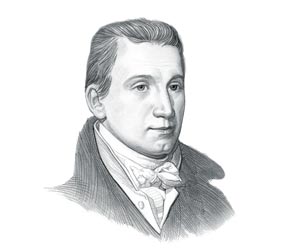|
The Treaty of 1818 set the 49th parallel as the border with Canada
from Rupert's Land west to the Rocky Mountains. The
treaty and Convention of 1818 also established a joint
occupation of Oregon by the British and the US for the
next ten years. The Convention of 1818 marked the
beginning of improved diplomatic relations between the
US and Great Britain.
Convention of 1818 for kids:
What is the 49th parallel?
What is the 49th parallel?
Definition: The 49th parallel of north latitude forms part of the
international boundary between Canada and the United States. The
word 'parallel' refers to an imaginary line that represents degrees
of latitude that encircle the earth parallel to the plane of the
equator. The 49th parallel is used as an informal name for the
Canadian border with the USA, which is marked out by the parallel
line of latitude at 49°N.
The Convention of 1818 and the 49th
parallel: Background History
After the US acquired the
Louisiana Purchase in 1803, a
boundary was agreed between the new lands and Rupert's Land (British
Lands in North America). The boundary was along the watershed
between the Missouri River and Mississippi River basins on one side
and the Hudson Bay basin on the other. However, it is difficult to
precisely determine the location of a dividing line in a region of
level plains, such as in central North America. The British and
Americans had concluded a successful meeting in 1817 with the
Rush-Bagot Treaty and the scene was set
to meet again at the Convention of 1818.
When was Convention
of 1818 and the 49th parallel set?
The Convention of 1818 was held in the
October of that year and the Treaty of 1818 was signed on October
20, 1818. Ratifications were exchanged on January 30, 1819.
The Convention of 1818 and the 49th
parallel: Who conducted the negotiations?
The negotiations at the Convention of 1818 were
conducted by Albert Gallatin and Richard Rush on behalf of the
Monroe administration and Frederick John Robinson and Henry Goulburn
on behalf of Great Britain.
Where was the
Convention of 1818 held?
The Convention of 1818 was held in Philadelphia
Pennsylvania. The official name of the treaty was The Convention
Respecting Fisheries, Boundary and the Restoration of Slaves Between
The United States of America and The Kingdom of Great Britain and
Ireland. The reference to slaves was due to American claims that the
British still held some slaves on British ships or territories after
the War of 1812 had ended and contravened the terms of the peace
Treaty of Ghent . The Americans
were demanding either the return of these slaves or compensation for
them.
The Convention of 1818 and the 49th
parallel: What were the terms of the Treaty of 1818?
There were six articles to the Treaty of 1818:
-
Treaty of 1818: Article I
secured fishing rights off the shores of Newfoundland Labrador
for the U.S.
-
Treaty of 1818: Article II
set the boundary between British North America and the US “along
a line from the most northwestern point of Lake of the Woods
along the 49th parallel of north latitude to the Stony Mountains
(Rocky Mountains)
-
Treaty of 1818: Article
III called for the joint control of the Oregon Country (Colombia
District of the Hudson Bay Company) for 10 years.
-
Treaty of 1818: Article IV
confirmed the regulation of commerce between the 2 countries for
an additional 10 years.
-
Treaty of 1818: Article V
agreed to defer differences over the U.S. claim in regards to
the Treaty of Ghent would be resolved by “some Friendly
Sovereign or State to be named for that purpose.”
-
Treaty of 1818: Article VI
stated that ratification would occur within 6 months after the
treaty was signed.
Significance of the Convention of 1818
and the 49th parallel
The Significance of the Convention of
1818 and the 49th parallel was that:
The Convention of 1818
and the 49th parallel: Future Changes
The agreements made during the Convention of
1818 and the setting of the 49th parallel were indefinitely extended
in 1827. However, by the middle
1840s the political policies of Great Britain and America had
changed. U.S. immigration had increased and America wanted to
claim the entire territory. This led to a renegotiation of the
agreements made in the Convention of 1818. The
1846 Oregon Treaty permanently established the 49th parallel as the boundary between
the United States and British North America to the Pacific Ocean and
heralded the westward migration of many settlers along the
Oregon Trail. The next issue was
over the question of whether Oregon should be free soil or
slave soil. |

